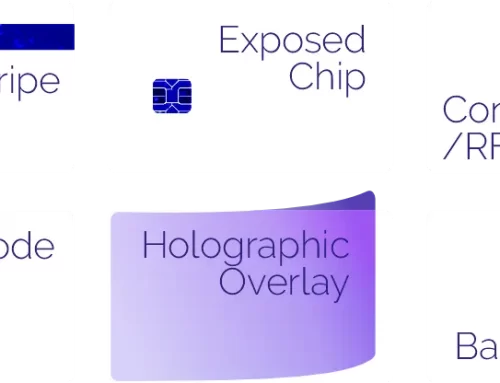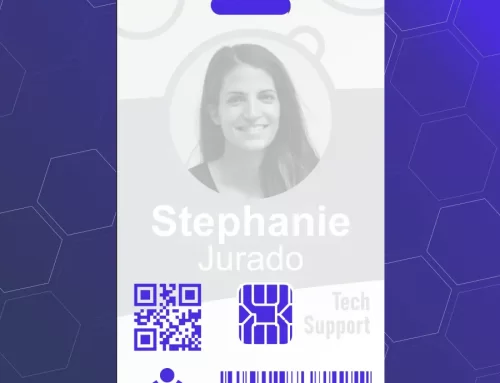Managing Templates in a Complex Organizational Structure
Large corporations typically have many offices and facilities spread around the country, or indeed the world. With a wide footprint, the challenge of managing their personnel’s identity badging in an efficient and secure manner becomes extremely complex. Human Resources and Safety Officers have to ensure that each employee can access appropriate facilities without difficulty, while ensuring that all security policies and procedures are respected while not being overly cumbersome.
While ideally each location uses the same RFID technology for secure access control, this is generally not the case. Therefore, template management must also be able to handle the variety of different technology badges which are typically found in different facilities. The template used for any given individual, or new hire, must have the correct graphic design, must be printed on the correct technology card, must be registered with the appropriate access control system(s), and must be delivered to the right location for pick-up by the employee.
For the graphic design of the templates, in general a standardized layout is used to ensure that employees are quickly recognized no matter which location they enter. Most companies include their logos on the ID card templates, but some companies choose to remove logos out of concern about a lost card being useable prior to its being de-activated. It is generally not recommended to allow different divisions to use their own design, as recognition across the organization is inhibited.
Best Practices for Managing ID Card Templates
Managing photo ID card templates in complex organizations can be a challenging task, but there are some best practices you can follow to make the process more efficient and effective. Here are some tips to consider:
- Standardize templates: Create standardized templates for different departments, positions, or roles. This ensures consistency in the design and layout of ID cards and makes it easier to manage and update them.
- Create a centralized repository: Store all photo ID card templates in a centralized repository that can be accessed by authorized personnel. This makes it easier to manage and access them from anywhere within the organization, and will ensure that only the latest version of the templates is used.
- Establish permissions: Limit access to templates to authorized personnel only. Establish permissions and security measures to ensure that only those with the proper security clearance can create or modify templates. This will help prevent unauthorized changes or misuse of the templates.
- Follow data protection regulations: Ensure that all data on the ID cards is compliant with data protection regulations. This includes personal information such as names, addresses, and photographs.
- Establish a change control process: Develop a change control process that outlines how changes to the templates will be reviewed, approved, and implemented. This will help ensure that any changes are properly vetted before they are implemented.
- Train employees: Train employees on how to use the photo ID card templates and ensure that they understand the importance of maintaining their security and accuracy. This includes how to issue, update, and revoke cards as well as how to maintain the security of the cards.
- Conduct annual audits: Conduct regular audits of the photo ID card templates to ensure that they are up-to-date, accurate, and comply with company policies and procedures.
Unique Requirements of Hierarchical Organizations
In complex organizations, having hundreds of locations and many divisions, a hierarchy of templates may be required. For example, some templates may be only used in a single division, because that division requires unique graphics. Or different locations may use different templates which reflect the specific access control technology in use at each facility.
The InstantCard service allows templates to be defined at the parent, child, or grand-child level. This tiered approach allows a change made at the top of a branch to be automatically reflected throughout the children within that branch. For example, if for some reason the template in the state of Tennessee must be modified, then all templates for Memphis, Nashville, etc. will automatically reflect that change – but no other locations in other states would be impacted.
Complex organizations which allow local printing of photo ID cards have a particularly hard time managing their templates, because it is difficult to audit and control each location’s adherence to corporate standards. As a result, most complex organizations turn to a central issuance service to issue photo ID cards, since security is the paramount concern. However, the efficiency of in-house central issuance is often unsatisfactory, because systems and procedures are not up to the standards required.
Use of specialized central issuance services, like InstantCard, allows complex corporations to feel secure that their security procedures and policies are being strictly followed, while benefiting from the efficiency and cost savings of using a cloud-service which was designed to be best-of-breed for the purpose of ID card printing and distribution.
Conclusion
While the challenges of card issuance in complex organizations continue to rise, technology is available to make the management of those templates much easier than in the past. In particular, cloud services and high-speed networking, as well as highly efficient last-mile delivery services, make centralized template management, linked with central issuance, a viable and secure solution for corporations that need to reconcile security with efficiency in their photo ID card management.



